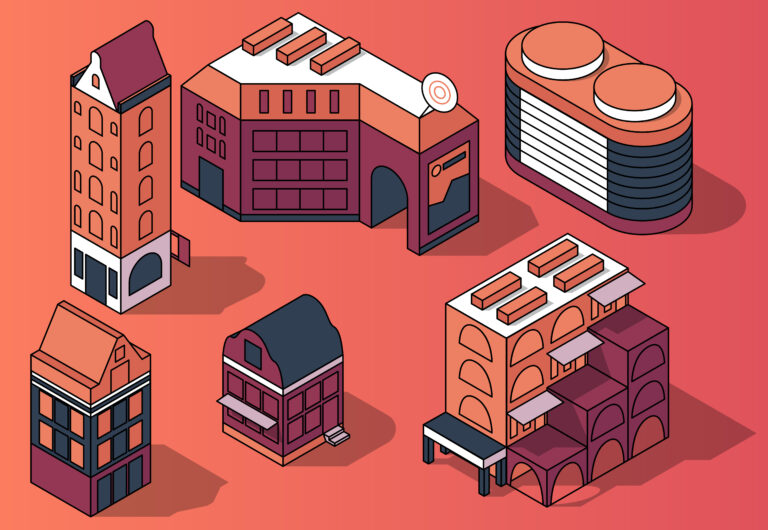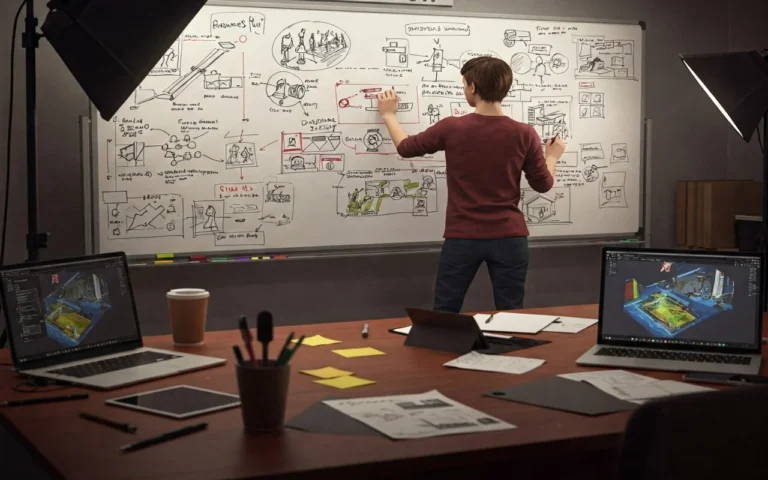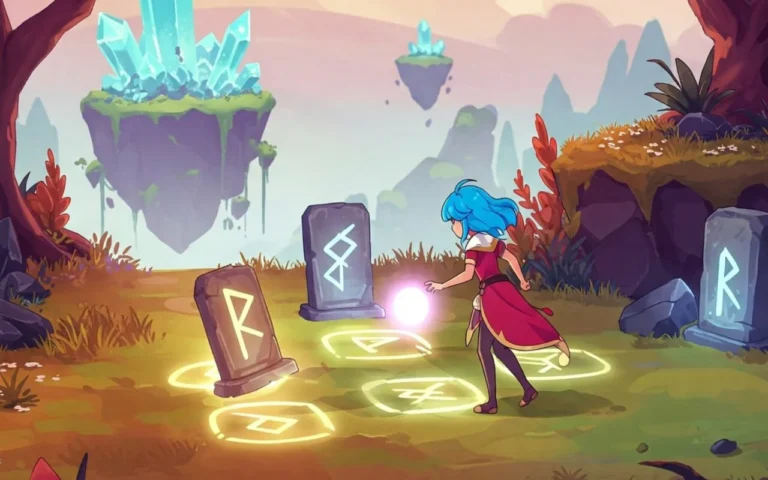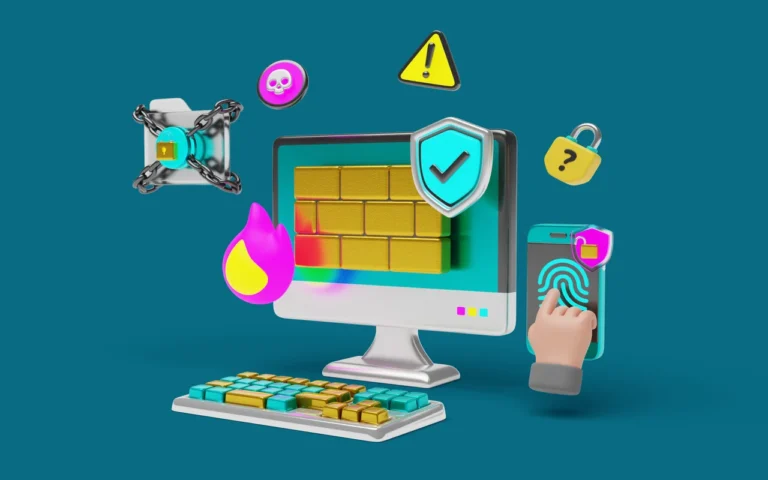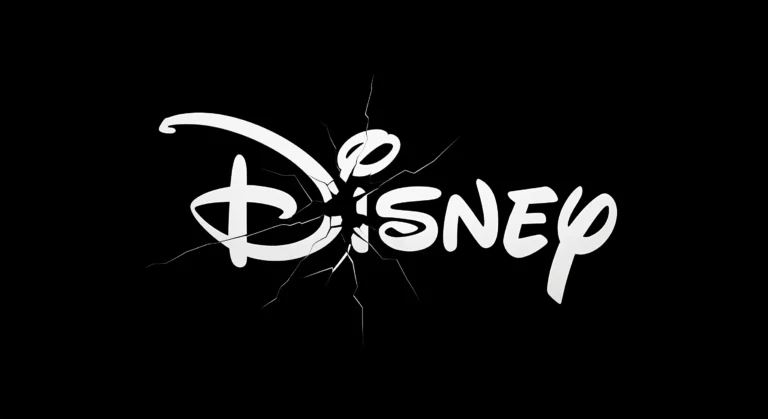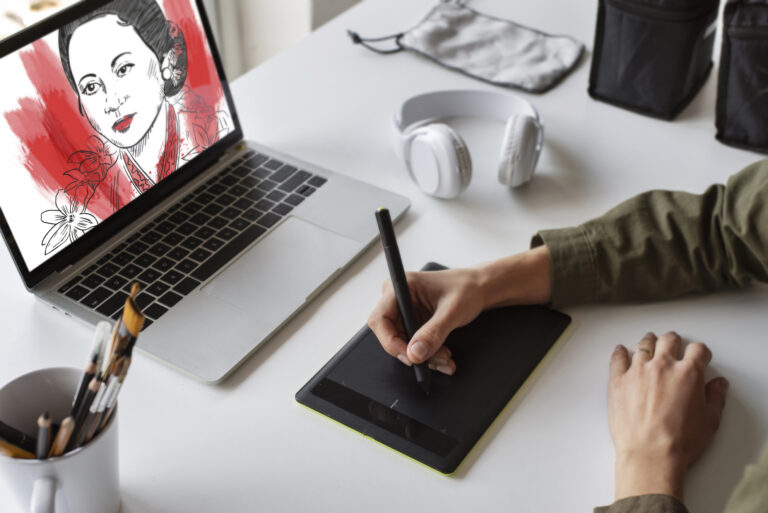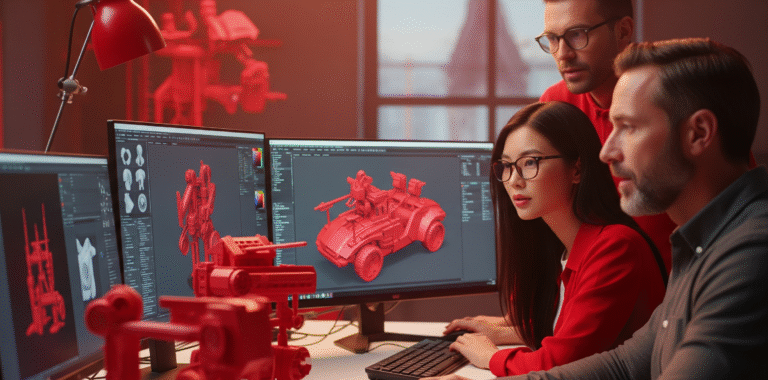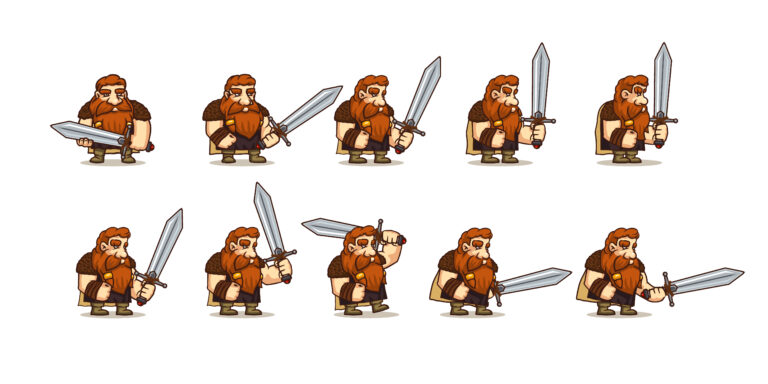Beginning the art process is thrilling, but most artists have no idea how to actually be different. You’re probably wondering: “How do I find my own personal voice? How do I develop a style that’s distinctly mine?” This is something every artist has to deal with as they start their artistic journey—even those aiming to work in an animation studio.
The bright side is, finding your unique art style is not a waiting game for a revolutionary “aha moment”; it is a conscious, active, and playful process of experimentation and discovery. It is a set of successive explorations that build on each other, like a great story, and you are both the author and the hero. This guide will take you through an uncomplicated, operative journey to find and develop your own unique art style.
Need Animation
Services? Visit our Animation Service page to see how we can help bring your ideas to life!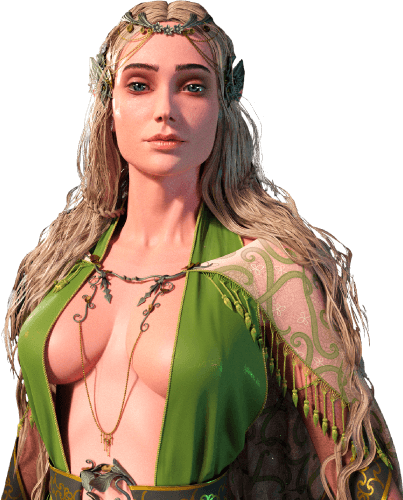
Top Reminders for Discovering and Developing Your Unique Art Style
Visualize your artistic path as an unfolding adventure. Every step that we discuss here is a new chapter, a new discovery that adds to the rich tapestry of your artistic self. It’s not imitation, but understanding what lights you up and then letting that unique fire radiate through your art.
1. Don’t Forget to Play Around with Tools
It’s like dipping your toe in a vast ocean of possibilities. Before you can decide upon what kind of art you’re going to make, you need to try different tools and mediums. This is not about achieving mastery at once – it’s about easy, friendly dabbling. Do whatever catches your eye. The point is to experiment with many without holding back.
As you play around, pay attention to which tools and materials feel the most natural and enticing. Do you love the smooth shadowing of a pencil, unpredictable sprinkling of watercolor, or the precision of a digital pen? Some mediums may feel awkward at first, while others might feel natural. It’s all about discovery, exploring your comfort zone, and where your creativity most readily flows. It’s the foundation upon which all the subsequent steps are built.
2. Pause and Notice What Truly Inspires You
All artists look outwards for inspiration, but it must be done with a certain focus. This is the step where we convert admiration to profound comprehension. It’s much like learning a map to familiarize yourself with the landscape you admire, especially when exploring contrasts like realistic vs. stylized art style in games.
Select three diverse artists or artistic styles that truly resonate with you. They don’t have to be famous or even in the same genre. What matters is that their work genuinely moves something within you. For each chosen artist or style, pick one specific piece of art that particularly captivates you. Now, ask yourself some crucial questions:
- What specifically draws you to it?
- Is it the overall mood, the subject matter, or something more?
- Is it the palette they use, the lines they create, the way they paint lines, or the textures they produce? Reduce it to its absolute foundation.
- Why is this particular piece important to you?
- Does it evoke an emotion, spark an idea, or remind you of something in your life?
Write down your answers to these questions. The exercise of putting your observations into words turns passive appreciation into active learning and knowledge. This process of analyzing helps you realize the things you are intuitively attracted to, which are likely to become the foundation of your own style in the long run.
3. Produce Lots of Art & Recognize Patterns
This is where the magic truly occurs. Having found tools and reviewed inspirations, it’s time to create, create. create! Think of it as planting a lot of seeds to discover what blooms. Whether you’re exploring 2D & 3D art styles for video games or experimenting freely, the goal in this stage is to create as many pieces as you can. Don’t be fixated on every piece being a masterpiece. This stage is about creating a large quantity of work. The more you create, the more data you have for yourself.
Once you have a body of work, step back and look at it with fresh eyes. This is the moment for introspection. Be on the lookout for common themes and tendencies:
- What tendencies do you notice in your works?
- Do you find yourself drawn to particular palette choices?
- Do you usually paint in bold colors or muted ones?
- Are there any recurrent textures in your work?
- Do you usually make your marks?
- Bold and expressive, or delicate and precise
- Are you drawn to some subject matter?
- Do you always draw nature, humans, abstract forms, or ordinary objects?
These recurring habits—your favorite colors, textures, mark-making, and subjects—are not coincidences; they are the underlying “seeds” of your emergent individual style. By pulling them into conscious awareness, you begin to identify the underlying preferences that make your emerging artistic voice unique.
4. Mix, Match & Make It Yours
Become an expert curator and blender of ideas by mixing what you admire in inspirational pieces of art with your own work. It’s like a chef creating a signature dish with favorite ingredients. Apply what you discovered when surveying other artists and what you discovered in your work.
Select specific elements that appeal to you. Maybe you love the linework in one, the vibrant color palette of another, and the gritty textures you discovered in the other, or the simplicity of a monochrome art style. Now that you have collected the different aspects you enjoy, merge these aspects into an overall piece.
Choose a subject that you actually love and are passionate about.
Applying these combined influences to a subject that already excites you will make the experience fun and authentic. This active combination process is powerful. It’s how you take inspiration from somewhere else and make it into something that’s uniquely your own. You’re not copying; you’re creating and synthesizing. This step shows you how to mindfully make a style from various sources.
Read More: Exploring the Spectrum of Character Art Styles
5. Let Constraints Be Your Superpower
This may sound paradoxical, but putting boundaries can actually increase your creativity. Think of a sportsperson who trains within certain boundaries to enhance their performance. Placing a constraint involves placing a particular boundary on a project or a set of works. The boundary may be:
- One medium: Only drawing with a black pen, or only acrylic painting.
- Limited palette: Using only three colors, or a monochrome scale.
- Tight time frame: Completing one piece within 30 minutes, or creating one work per day for seven days.
- A specific theme: Creating a series on ‘trees’ or ‘urban scenes’ exclusively.
By having limited options, your mind turns into devising something outside the box to come up with a desirable output. Constraints force you to come up with innovative solutions and identify new opportunities. This exercise helps you sharpen your problem-solving technique in your art.
6. Practice Intentionally with Focused Goals
While casual doodling is fun, intentional practice is where true refinement happens. This is about purposeful improvement, like a musician practicing scales to perfect their technique. Instead of creating freely without a plan, approach each art session with a specific objective. What do you want to create or develop in this session? Are you focusing on anatomy, shading, or creating unique character art styles?
Choose one specific element of your painting to focus on in a session. It may be:
- Your brushstrokes: Simplifying their consistency, energy, or diversity.
- Contrast: Alternating light and dark, or complementary colors.
- Form: Creating the skill to draw three-dimensional shapes credibly.
- Texture: Exploring how to create different tactile qualities on your surface
- Focused improvement: By isolating and working to refine individual elements, you systematically improve your skills, which in turn strengthens your overall artistic voice.
This intentional approach guarantees that your practice time is maximally productive for the development of your style.
7. Limit Distractions from Screens and Social Media
In today’s world, distractions are everywhere, especially digital distractions. Uninterrupted concentration is a precious resource to an artist. Screens, and especially social media, have the ability to distract your creative work. The never-ending notification, scrolling, and comparison cycles can get you away from your work and inner voice.
Be careful if you’re on social media. Use social media sparingly, if not just for inspiration or connecting with your community. Most importantly, don’t use it to compare your work with others. Comparisons are only going to reinforce your negative feelings about yourself, not elevate them. Also, your creative energy is concentrated wholly inward.
Ignoring all outside distractions means you are almost completely focused and directing your energy towards your work. This creates more focus, more honest expression, and a greater connection with what you are doing creatively.
8. Embrace Mistakes & Iteration
The path to finding your unique style is rarely a straight one. In life, “mistakes” are not failures; they’re precious lessons. Think of a scientist who learns more from a failed experiment than from one that succeeds. When something doesn’t work out as planned, don’t discard it. Instead, view it as a chance to learn and know.
Think about what failed or what did not quite work. What are you going to do differently next time? Adjust your plan, and try again. This kind of iterative process of trying, failing, learning, and trying again is at the heart of artistic development. “Rules” are broken to create authenticity: Sometimes, the most thrilling breakthrough comes about when you happen to break traditional rules.
These random deviations can generate completely new ways of looking and making, and what you get is often the development of an honest and original signature style. This fearless experimentation is a hallmark of original artistry.
9. Identify Your Consistent Thread
You’ve likely started to see certain habits emerging in your work through consistent practice and experimenting. This is the stage of consciously observing and establishing these repeated traits. You might use certain textures on a regular basis, gravitate toward particular palette options, or use a particular kind of mark-making.
Keeping those elements consistent is not arbitrary and is part of your artistic DNA. After you have noticed these idiosyncrasies, be conscious of using them when making new work. This is not about being prescriptive, but noticing and reinforcing what you feel is growing as your personal style.
Actively doing this with your signature elements brings continuity to your body of work. As you explore diverse subjects or experiment with new techniques, that underlying thread helps make your creative “voice” sound cohesive and distinctive. It’s what causes folks to remark, “I know that’s your stuff!”
10. Allow Gradual Evolution of Your Style
Your art style is constantly changing, just like you. It is not static; it evolves and changes with you. Step seven involves coming to accept that your artistic journey is a continuous process. Understand that your style will evolve with your increasing experience, learning new skills, and personal growth. What is comfortable now will shift slightly (or drastically) next year.
Every now and then, reflect on your earlier work and contrast it with your latest pieces. Observe the changes, the evolution, and how your style has evolved. Don’t worry if your style changes direction. Embrace these new directions and give yourself the liberty to pursue them.
Your style will develop naturally as you gain more experience in life and remain curious about the world and your art.
Being open-minded allows you space to continue to develop and have your art be something new and of yourself.
Final Thoughts: Your Unique Voice Awaits
Discovering your art style is not a competition or an algorithm to be cracked. Instead, it is a very intimate search—a dance of making, observing, and refining. It’s about being present in the process, curiosity, and trusting your gut.
With consistent experimentation, introspective reflection, and honest practice, your unique creative voice will break out, develop, and progress organically. It’s already within you, awaiting to be unleashed. So go ahead, make the moves, embrace the process, and embark on the incredible journey of finding your own personal artistic signature.
